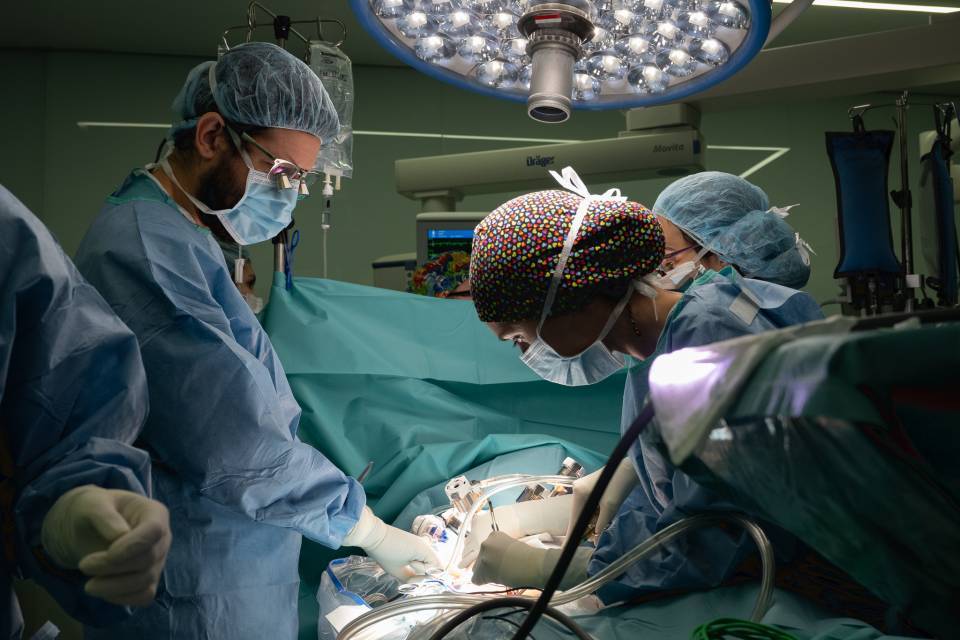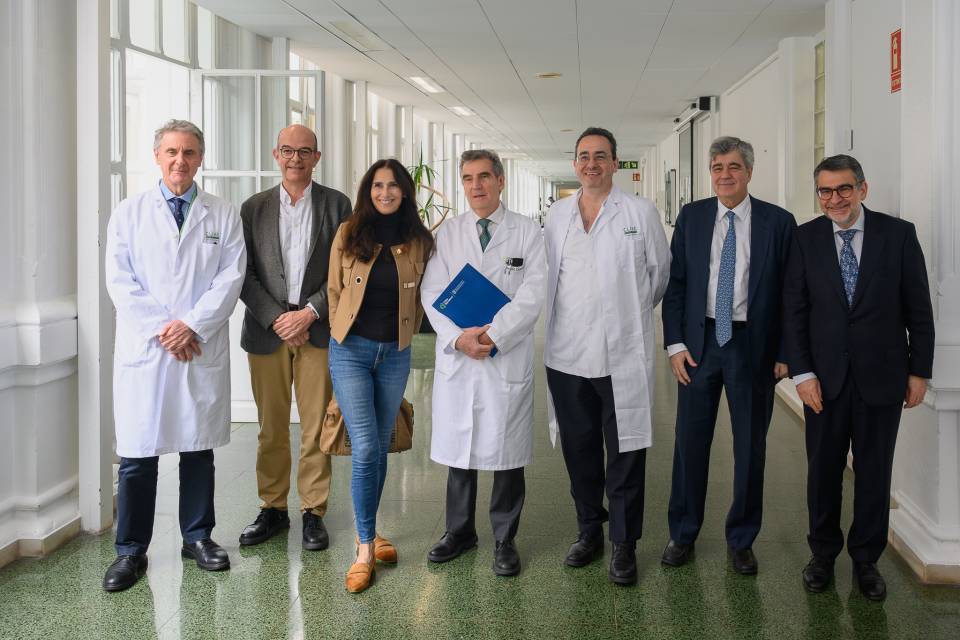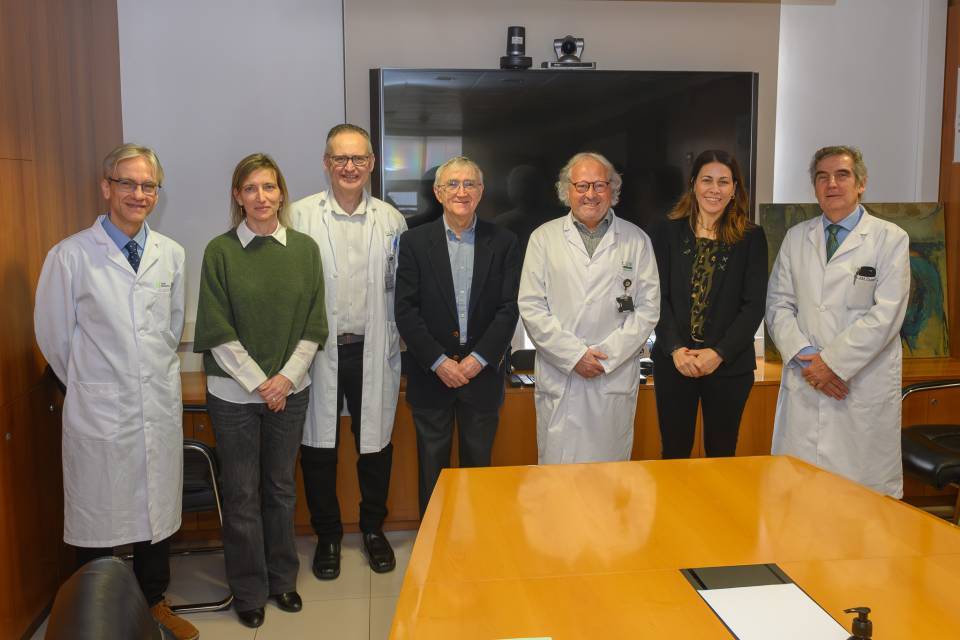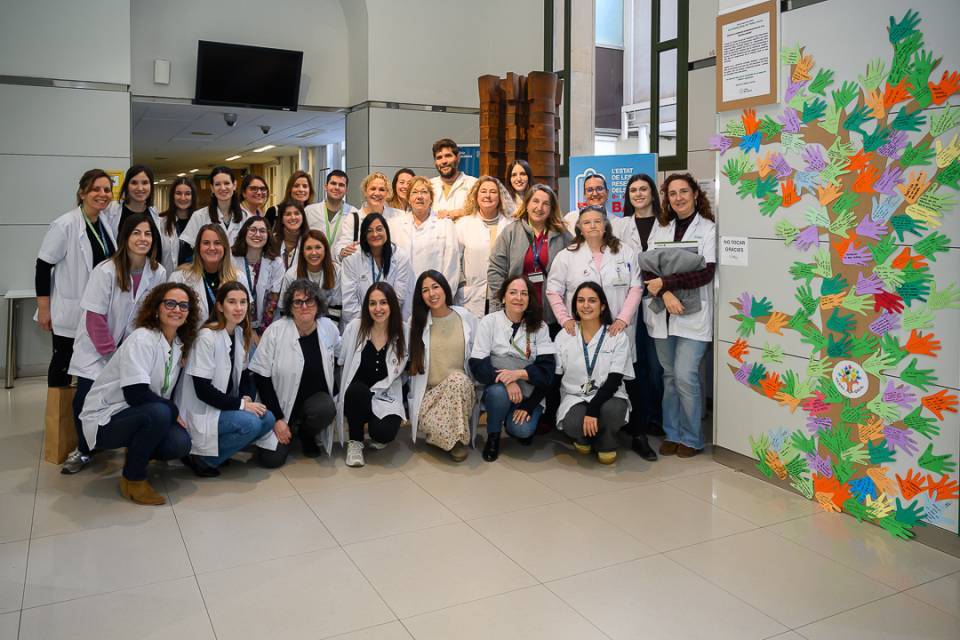The Hospital Sant Joan de Déu Barcelona and the Hospital Clínic Barcelona have created a congenital heart disease centre to provide joint care throughout all stages of life to children born with a heart malformation. The Sant Joan de Déu – Clínic Barcelona Congenital Heart Disease Centre was presented today by Minister of Health of the Generalitat of Catalonia, Manel Balcells; Stefano Congiu, head of Cardiovascular Surgery at Sant Joan de Déu Hospital; Marta Sitges, director of the Cardiovascular Institute at Hospital Clínic Barcelona and Daniel Pereda, director of the new center and consultant to the Clinic's Cardiovascular Surgery Service.
Each year in Catalonia, 600 children are born with congenital heart disease, whether it is a structural problem of the heart (of the cardiac chambers or valves, for example), or the great vessels in the thorax. In 30% of cases, it is a serious heart disease. Thanks to the progress made in recent decades, 95% of these children reach adulthood; but they do so with very specific needs.
In this context, the Congenital Heart Disease Centre run by the Hospital Sant Joan de Déu and the Hospital Clínic Barcelona has been created in order to ensure the same team of professionals can monitor and treat the patients throughout their lives, since success in the management of patients with cardiovascular disease is based on high-quality multidisciplinary care and on a long-term follow-up strategy that guarantees continuity throughout adulthood. Therefore, having a specialized, integrated centre with a crosscutting vision is key to improving the quality of care for these patients.
The new centre will have two branches – one, at the Hospital Sant Joan de Déu, and the other at the Hospital Clínic. Together, they will offer a complete and complementary portfolio of services and will be staffed by a team of 23 professionals including cardiovascular surgeons, cardiologists, paediatricians and anaesthetists.
First minimally invasive heart surgeries in children in Spain
Moreover, the creation of this centre, resulting from the partnership between the Hospital Sant Joan de Déu and the Hospital Clínic will make it possible to extend to the paediatric population surgical techniques that until now have not been used in the field of paediatric heart surgery, but have already been implemented in adults. This is the case of minimally invasive thoracoscopic and robotic surgeries. Up to now, children and young people with congenital heart disease who had to undergo surgery were operated on using open surgery, which lengthened the patient’s postoperative and recovery period, as well as causing them greater aesthetic impairment.
The new congenital heart disease centre has already performed five operations of this type on children. In three cases, the professionals opted for thoracoscopic surgery, which consists of making small incisions in the child’s thorax in order to insert a device with a video camera that allows us to see the surgical area and which instruments are required to carry out the operation. The first girl operated on using this technique had a heart tumour that needed to be removed. The youngest patient operated on so far at the centre was a 6-year-old girl.
First case of robotic surgery in children
In another two cases, the professionals opted for robotic heart surgery. The first paediatric patient operated on with the help of a robot was a 13-year-old girl from the Basque Country. She had a congenital ostium primum type interatrial communication (both atria were connected) and a defect in the mitral valve. These malformations caused an anomalous blood flow in the heart and an imbalance, which overloaded the right side of the heart and, in the long term, caused heart failure.
In this patient’s case, moreover, the disease was worsened by a very pronounced scoliosis, which made access to the heart difficult. Therefore, the heart surgeons decided to use a surgical robot, which, through four small incisions in the patient’s thorax (each incision being 8 mm in diameter), allowed them to insert a camera into her heart to see the surgical area and which instruments would be needed to carry out the operation. In this way, a medical team from the Congenital Heart Disease Centre succeeded on the one hand in closing the connection between the two atria and, on the other, in repairing the damaged mitral valve. The operation, which was performed in November, took four hours and involved ten professionals.
The second patient operated on using robotic heart surgery was a 15-year-old boy, who had been treated for interatrial communication by means of catheterization and had developed an occlusion device infection (endocarditis).
The director of the centre, Daniel Pereda, explains that, in the case of children, robotic surgery is limited by the size and age of the patients, because surgical implements area conceived and designed for adults.
Therefore, surgeons currently only consider this option for older children and adolescents. The main patients who are candidates for this type of operation are those with the following diseases: interatrial communications (if they cannot be resolved by catheterization), mitral or tricuspid valve problems, and heart tumours. The plan is to use minimally invasive robotic surgery to operate on a dozen patients each year and to start with an annual activity of 20 thoracoscopic surgeries.




